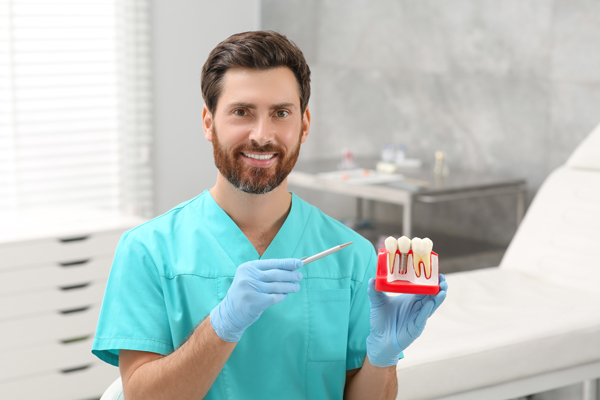Types of Dental Bone Grafts

Dental bone grafts restore structure and strength to the jawbone. Not only does this enhance the natural appearance of the face, but it can also create a strong foundation for dental implants. There are several types of dental bone grafts that an oral surgeon may recommend. Exploring the various types available can better prepare patients for their consultation appointment with an oral surgeon.
Types of dental bone grafts
An oral surgeon will assess the patient's jawbone and medical history when determining which dental bone graft type best suits their needs. Explore the four types below.
Autografts
Autografts are dental bone grafts sourced from another part of the patient’s body, such as the chin, jaw, or hip. These grafts are highly effective due to their compatibility with the patient’s body, which reduces the risk of rejection. Since they contain living cells, they also promote natural bone regeneration.
Allografts
Allografts are derived from human donors, usually donated to a bone bank. These grafts promote new bone growth while eliminating the need for an additional surgical site. Note that the donated bone undergoes rigorous processing and sterilization to ensure patient safety.
Xenografts
Xenografts use bone material sourced from animals — most commonly from cows (bovine) or pigs (porcine). Again, the dental bone graft is thoroughly processed to ensure it is biocompatible, sterile, and safe. Keep in mind that this type of graft is typically used as a scaffold to support new bone growth, making it ideal for larger grafting needs.
Synthetic bone grafts
Synthetic dental bone grafts are created using biocompatible materials, such as calcium phosphate or bioactive glass. They mimic natural bone and stimulate the body's ability to regenerate bone tissue. As such, they are a versatile and widely available option for patients seeking alternatives to natural bone sources.
Choosing the right type of dental bone graft
Choosing the right type of dental bone graft involves considering the patient's overall health, the extent and location of bone loss, and the procedure's specific goals. Medical conditions or medications may influence the choice, with some patients benefiting from graft materials that reduce the risk of rejection or infection, such as autografts. Severe bone loss may require more substantial grafting options, such as xenografts or synthetic materials, to rebuild the jawbone structure effectively. The procedure's purpose, whether to prepare for dental implants or repair periodontal damage, is also a key factor in the decision-making process.
What about patient preference?
Personal preferences can further impact the choice of dental bone graft material. Some patients may prefer autografts sourced from their own bodies, while others might opt for non-animal-derived or synthetic options. An oral surgeon will consider all these factors and provide personalized recommendations to ensure the most effective and successful treatment outcomes.
Schedule a consultation with an oral surgeon
A dental bone graft can improve oral health and function, especially for those preparing for permanent tooth replacements. Ask an oral surgeon about your options in a consultation. Contact our Patterson team today to begin.
Request an appointment here: https://www.pattersondentaloffice.com or call Patterson Family Dental at (209) 585-1472 for an appointment in our Patterson office.
Check out what others are saying about our dental services on Yelp: Will I Need a Bone Graft for Dental Implants in Patterson, CA.
Recent Posts
A bone graft before dental implants is an important aspect of the procedure that must be performed correctly to ensure successful implant placement and stability in the jawbone. However, before you consider going under the knife, it’s important to know what grafting does and why it’s necessary for your dental implants to work properly. Here…
A bone grafting procedure can be used to fix issues that develop with the joints and bones. In dentistry, it is usually used to restore lost bone tissue in the jaw. A number of patients have to get such a procedure to be eligible for implants.Bone grafting involves transplanting bone tissue from another part of…
A bone graft procedure is often necessary in order to repair a part of a person’s body. When receiving a bone graft, a person should expect to undergo invasive surgery. Understand that bone grafting requires the removal of a portion of bone from one body part, which is then placed elsewhere within the body. If you…
Getting approval for dental implants is the first step in the process. Anyone interested in dental implants must undergo a consultation, examination, and assessment to be a viable candidate for the surgical process. Since an implant is surgically inserted into the jawbone, the patient needs to have sufficient bone and be free of gum disease.…


